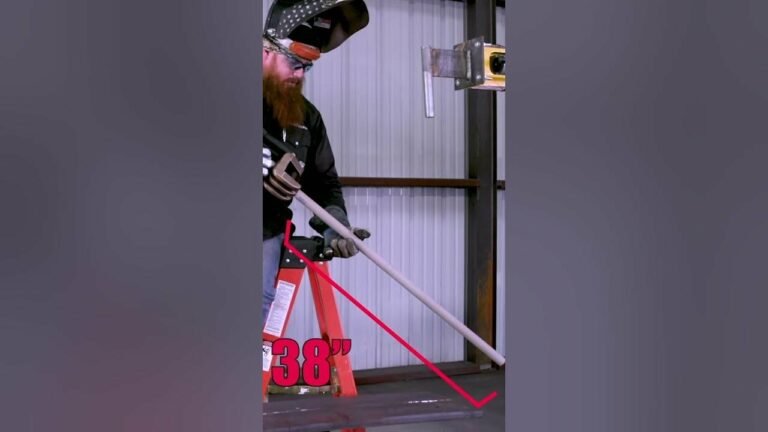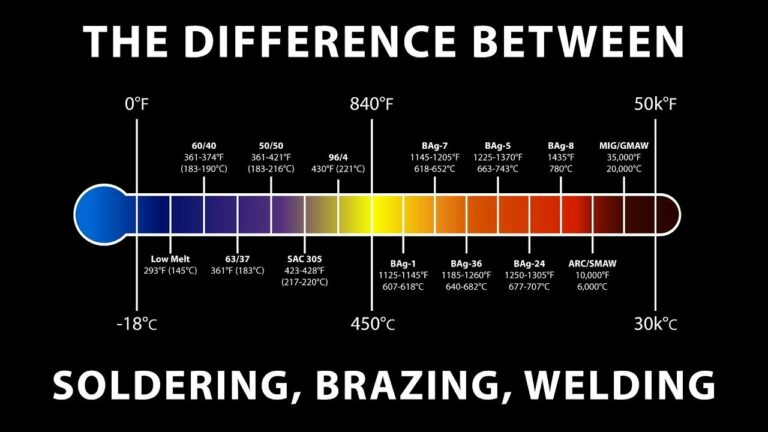Exploring The Best Welding Spots: Where To Weld For Optimal Results
Looking to dive into the world of welding but not sure where to start? Well, you’ve come to the right place! In this blog article, we’ll explore the various options and locations for welding, helping you find the perfect spot to ignite your passion for metal fabrication. Whether you’re interested in joining metals for construction, automotive, or artistic purposes, understanding where to weld is crucial. So, without further ado, let’s delve into the fascinating world of welding and discover the ideal locations to unleash your welding skills!
Where to Weld
Welding is a critical process in many industries, ranging from construction and manufacturing to automotive and aerospace. It involves joining two or more pieces of metal together by melting and fusing them using intense heat. Whether you’re an experienced welder or someone interested in learning the craft, it’s important to know the different locations where welding takes place. In this article, we will explore various settings and environments where welding is commonly performed. By understanding these locations, you can better appreciate the challenges and requirements associated with each and make informed decisions about where to weld.
Section 1: Welding in Workshops
Welding workshops are dedicated spaces specifically designed for welding activities. They are equipped with the necessary tools, equipment, and safety measures required for welding projects. Here are some key points to consider about welding in workshops:
1.1 Welding Benches: Welding benches provide a sturdy and stable surface for welding. They are typically made of steel or metal and come with clamps and fixtures to hold the workpieces securely.
1.2 Ventilation Systems: Proper ventilation is essential in welding workshops to remove hazardous fumes and gases generated during the welding process. Ventilation systems may include exhaust hoods, fans, and ductwork to ensure a safe work environment.
1.3 Welding Screens and Curtains: Welding produces intense light and sparks that can be harmful to the eyes and skin. Welding screens and curtains are used to block the harmful radiation, protecting nearby workers and maintaining visibility.
1.4 Welding Tables: Welding tables are specialized work surfaces with heat-resistant materials and features such as clamps, slots, and fixtures to hold the workpieces in place during welding.
Section 2: Welding in Construction Sites
Construction sites are often bustling with various welding activities. Welding plays a crucial role in joining structural elements and fabricating metal components. Here’s what you need to know about welding in construction sites:
2.1 Structural Welding: Structural welding involves joining beams, columns, and other load-bearing elements to create strong and durable frameworks for buildings, bridges, and other structures. It requires skilled welders and adherence to strict welding codes and standards.
2.2 Mobile Welding Units: Construction sites are dynamic environments, and sometimes the welding needs arise in locations that are not readily accessible. In such cases, mobile welding units equipped with generators and necessary tools can be deployed to perform welding on-site.
2.3 Pre-Fabrication: In many construction projects, certain components are fabricated off-site, and welding is performed in pre-fabrication facilities. This allows for efficient assembly and reduces the on-site welding requirements, saving time and ensuring quality control.
Section 3: Welding in Manufacturing Facilities
Manufacturing facilities encompass a wide range of industries, including automotive, aerospace, electronics, and more. Welding is an integral part of the production processes in these facilities. Let’s explore welding in manufacturing:
3.1 Robotic Welding: Many manufacturing facilities employ robotic welding systems for increased efficiency and precision. These automated systems can perform complex welding tasks with speed and accuracy, improving productivity and reducing human error.
3.2 Assembly Lines: Welding is often integrated into assembly lines in manufacturing facilities. It involves joining various components together to create finished products. Welding stations along the assembly line ensure continuous production flow.
3.3 Welding Fixtures and Jigs: Fixtures and jigs are used in manufacturing to hold the workpieces in the correct position during welding. These tools ensure accurate alignment and consistency in welding quality.
Section 4: Welding in Automotive Repair
Automotive repair workshops frequently require welding for vehicle maintenance and restoration. Here’s an overview of welding in automotive repair settings:
4.1 Body Repair: Welding is commonly used in automotive body repair to fix damaged panels and frames. Skilled welders use techniques like spot welding and MIG (Metal Inert Gas) welding to restore the structural integrity of vehicles.
4.2 Exhaust System Repair: Exhaust systems can develop leaks or suffer damage over time. Welding is used to repair or replace sections of the exhaust system, ensuring optimal performance and reducing harmful emissions.
4.3 Frame Straightening: In the case of accidents or collisions, vehicles may have bent or misaligned frames. Specialized equipment and welding techniques are utilized to straighten and reinforce the damaged frames, ensuring safe and reliable operation.
Section 5: Welding in Shipbuilding and Offshore Industries
Shipbuilding and offshore industries have unique welding requirements due to the harsh environments and demanding structural needs. Let’s delve into welding in these industries:
5.1 Naval Architecture: Welding is extensively used in shipbuilding for jointing various steel plates and sections to create the hull and superstructure of ships. Welding is also employed in the fabrication of ship components such as pipelines, masts, and decks.
5.2 Offshore Structures: Offshore platforms and structures require durable welding processes to withstand harsh marine conditions. Welding techniques such as submerged arc welding (SAW) and flux-cored arc welding (FCAW) are employed to ensure strong and reliable connections.
5.3 Underwater Welding: Underwater welding is a specialized field that involves welding in underwater environments. It enables repairs and maintenance on submerged structures such as offshore platforms, pipelines, and ships. Both dry welding (using hyperbaric chambers) and wet welding (directly in water) techniques are employed.
Section 6: Welding in Artistic and Decorative Applications
Welding is not limited to industrial and structural applications. It is also widely used in artistic and decorative pursuits. Here’s what you need to know about welding in art:
6.1 Sculptures: Welding enables artists to create sculptures using metal as their primary medium. Techniques like TIG (Tungsten Inert Gas) welding and MIG welding allow for precise and intricate metalwork to bring unique artistic visions to life.
6.2 Functional Art: Welding is also employed in creating functional art pieces, such as furniture, light fixtures, and decorative metalwork. The versatility of welding techniques enables artists to blend aesthetics with functionality.
6.3 Metal Restoration: Welding plays a crucial role in the restoration of antique metal items. Skilled welders utilize techniques like braze welding and spot welding to repair and recreate missing or damaged metal sections, preserving historical artifacts.
Conclusion:
Understanding the different locations where welding takes place is essential for both professionals and enthusiasts. Whether it’s in dedicated workshops, construction sites, manufacturing facilities, automotive repair shops, offshore industries, or artistic pursuits, welding holds a unique place in various industries and applications. Each setting comes with its own challenges and requirements, demanding specific skills and techniques. By familiarizing ourselves with these locations, we can make informed decisions about where to weld and ensure successful outcomes in our welding endeavors.
Frequently Asked Questions
Where is the best place to weld?
The ideal location for welding depends on the specific project and the materials being used. In general, welding should be done in a well-ventilated area to prevent the accumulation of fumes. It is also important to choose a location with a stable and flat surface to ensure proper alignment and stability during the welding process. Additionally, selecting a location away from flammable materials and sources of ignition is crucial for safety. Overall, it is recommended to weld in a designated welding area or workshop equipped with appropriate safety measures.
Can I weld outdoors?
Welding outdoors is possible, but it requires careful consideration of environmental factors. Wind can negatively impact the quality of the weld by blowing away shielding gas and causing uneven heat distribution. If welding outdoors is necessary, it is advisable to create a windbreak or use welding screens to minimize these effects. Additionally, welding outdoors may require additional safety precautions such as securing the workspace to prevent accidental movement or tipping of equipment.
Can I weld in a garage?
Welding in a garage is generally acceptable, but it is important to take certain precautions. Ensure adequate ventilation by opening doors and windows or using exhaust fans to prevent the buildup of harmful fumes. Also, remove any flammable materials from the area and keep a fire extinguisher nearby. It is also recommended to protect the garage floor from sparks and slag by using a welding mat or fire-resistant covering.
Is it possible to weld in tight spaces?
Welding in tight spaces can be challenging but can often be accomplished with the right techniques and equipment. In such cases, using smaller welding machines or specialized welding tools designed for tight spaces can be helpful. Additionally, proper positioning and accessibility are crucial to ensure accurate welds. It is important to carefully plan and prepare the work area, taking into consideration potential obstacles and limitations.
Are there any specific safety measures when welding indoors?
When welding indoors, it is important to follow safety guidelines to protect yourself and the surrounding environment. Ensure proper ventilation by using exhaust systems or opening windows and doors to prevent the accumulation of harmful fumes. It is also crucial to protect flammable materials and surfaces by covering or removing them from the vicinity. Wearing appropriate personal protective equipment such as welding helmets, gloves, and flame-resistant clothing is essential to minimize risks and prevent injury.
Can I weld near electrical components or wires?
Welding near electrical components or wires can pose serious risks, including the potential for electric shock or damaging sensitive equipment. It is important to ensure electrical circuits are safely disconnected or turned off before beginning any welding work nearby. If it is not possible to disconnect the electricity, protective measures such as insulating barriers or welding screens should be used to prevent accidental contact. It is recommended to consult an electrician or professional welder for guidance in such situations.
Final Thoughts
In conclusion, choosing the right location for welding is crucial to ensure optimal results and safety. By considering factors such as adequate ventilation, proper positioning of materials, and the availability of necessary equipment, welders can maximize efficiency and minimize potential hazards. Whether it’s a professional welding workshop, a designated welding area in a garage, or an outdoor space with appropriate safety measures, finding the right “where to weld” can greatly impact the quality and success of welding projects.

